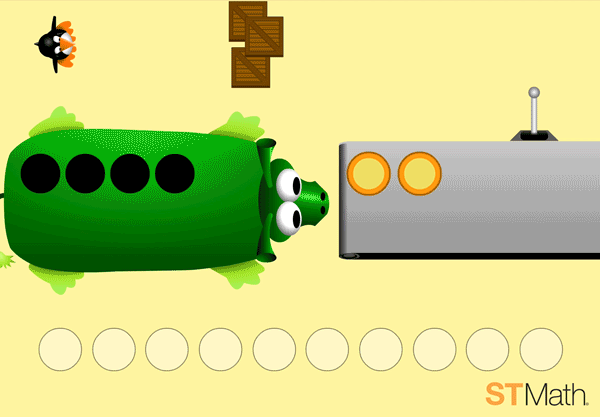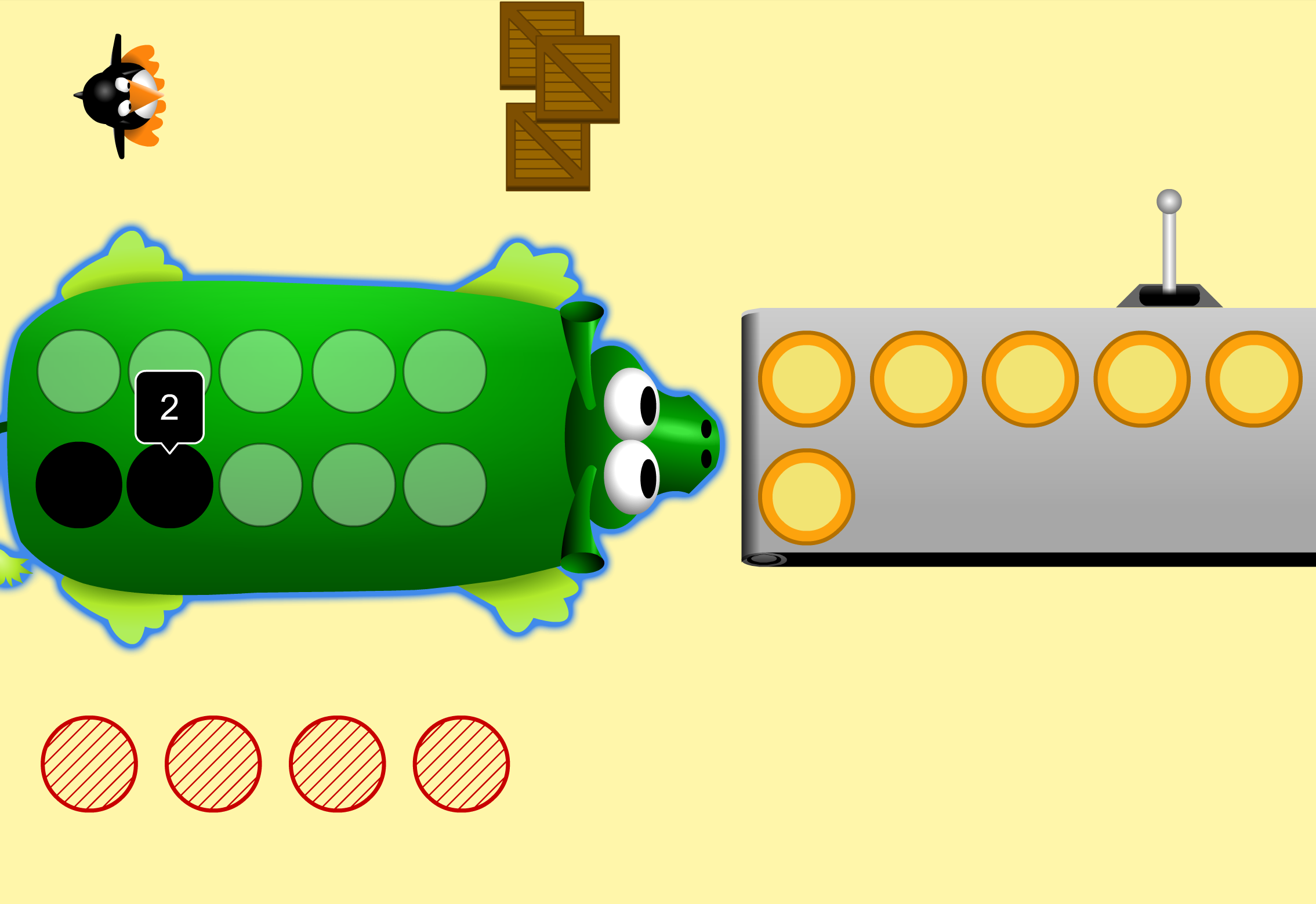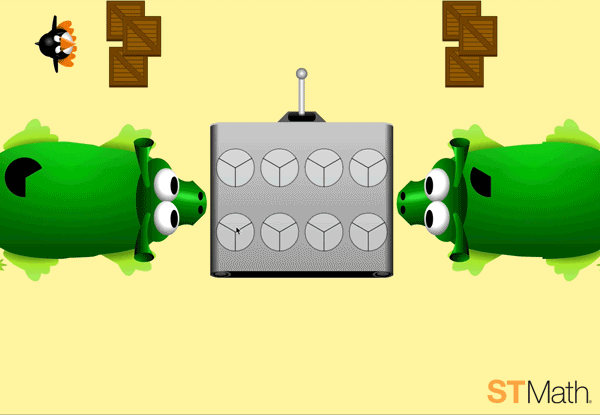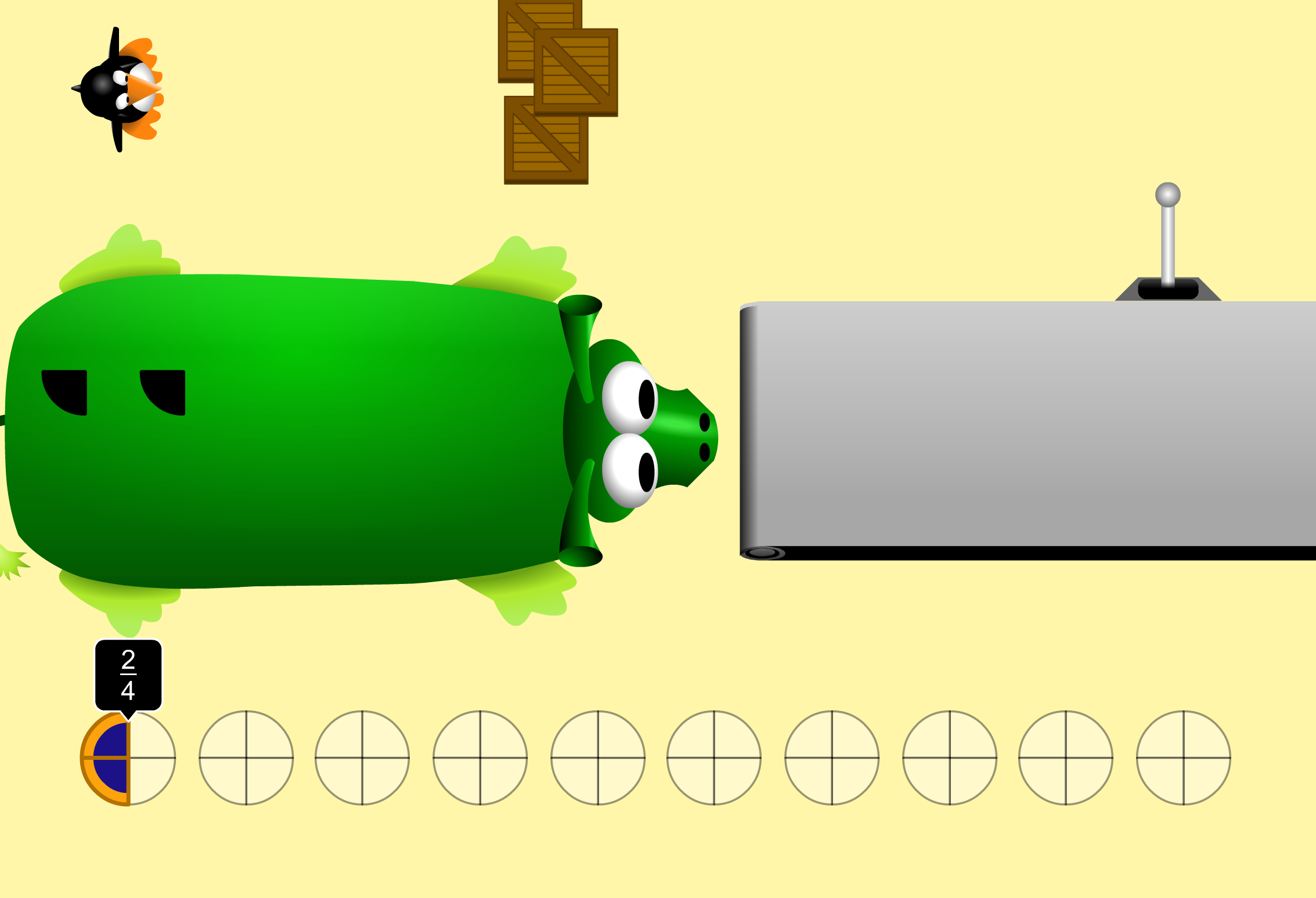Pie Monster is one of my favorite game characters in ST Math®. As someone raised on cheesy 80’s horror, I like anything with monsters. And, I can relate to the fact that all Pie Monster needs to be happy is pie.
In the past, we've talked about how ST Math students come to know Pie Monster through puzzles and cohesive imagery that spans several grades. By seeing a puzzle and game character that they recognize, students are better able to understand how the mathematical concepts in those puzzles are connected to one another.
The ST Math® patented approach to mathematics is strategic. Designed by experts in neuroscience, the spatial-temporal approach to learning provides students the opportunity to gain a solid understanding.
This mathematical understanding, or schema, is what allows students to manipulate math puzzles mentally and start to build upon a solid mathematical foundation. The generalized schema that builds off of student experience supports development, teaches understanding of mathematical operations, and introduces different problem types.
Let's dive a little deeper and look at the many ways we meet Pie Monster, why it matters for mathematical cohesion, and how teachers can use Pie Monster to initiate conversations with students for deeper mathematical understanding.
In first grade, ST Math users are introduced to Pie Monster as they explore addition and subtraction relationships and relate problem situations to equations. If you examine the structure of the puzzle, it’s easy to see that students are faced with a question, “Do you have the right amount of pies to feed Pie Monster?”
Students will determine the whole unknown number that makes the equation true. For example: 2 + ? = 4.

Upon closer inspection, students see that Pie Monster represents the sum. The pies on the conveyor belt and the pies on the ground represent addends. Because students must work to find the sum, this represents an example of a missing addend problem.
The animated feedback that plays after a student makes a selection is important. In the example above, the correct amount of pies are selected, which causes the monster to blow fire. This allows JiJi to cross the screen.
In instances where the wrong answer is selected, the animated feedback will demonstrate why. By watching the animation play and seeing that JiJi is still stuck, students are able to ascertain why their selection was wrong and correct this going forward, reinforcing productive struggle and perseverance.
Teachers can ask:
In second grade, Pie Monster returns to build on addition and subtraction concepts, situations, and explore them both in more complex ways. ST Math users are invited to connect what they learned in first grade by calculating the right amount of pies for Pie Monster on all sides of varying equations.

This Pie Monster puzzle circles students back to addition and subtraction and prepares them for more complex equations ahead.
Teachers should observe:
Pie Monster appears again in third grade to teach ST Math users number and operations-fractions and how to solve for unknowns in two-step problems.
By using the same visual model (Pie Monster), ST Math highlights the connection between concepts and motivates students to call on their learned knowledge of addition and subtraction. The mission of this puzzle is the same: calculate the right amount of pies for Pie Monster in order to get JiJi across the screen. But this time, Pie Monster is back with a friend for twice as much fun (and pie)!

Just like previous puzzles with Pie Monster, a new concept is introduced. Students learn fraction concepts and understand how to identify fractions using multiple visual models as well as numeral notations. They also understand how to represent a whole number as a fraction.
Teachers should observe:
Pie Monster is back in fourth grade to build upon student understanding of fractions learned in grade three, as well as addition and subtraction of whole numbers learned in grades one and two.

In these puzzles, students are tasked to solve equations using the same visual models they have come to identify when adding and subtracting whole numbers, mixed numbers, and fractions. ST Math users select the correct number of pies to feed Pie Monster.
Here, students explore joining and separating parts of the same whole. They also add and subtract mixed numbers using properties of operations, further discovering the relationship between addition and subtraction.
Teachers can start a classroom discussion by asking:
ST Math visually presents math concepts to students before introducing mathematical symbols. As the puzzles in Pie Monster progress, mathematical symbols are brought in, followed by introducing the language of fractions. Because true math understanding is a web of interconnected concepts, the transference in understanding to new concepts allows for mathematical coherence.
It is for the sake of mathematical coherence that ST Math is strategic about the order in which students are introduced to mathematical concepts. Without introducing partitioning and equal shares in first grade, students won't be ready to understand fraction concepts in second grade or fractions in fourth grade.
Teachers have the opportunity to open conversations around fractions and ask students what is happening on the screen as they work through Pie Monster puzzles. By creating a dialogue around what students are learning with Pie Monster, students can practice relevant vocabulary and grow engagement around complex mathematical discourse.
This dialogue and carefully constructed math sequence helps students make connections between the concepts they are exploring in Pie Monster and other games in ST Math. By encouraging critical thinking and problem-solving, we can ensure our students are mathematically equipped to solve the world’s most challenging problems.
Understanding Fractions Through Games
Parents, 4 Pitfalls to Avoid When Your Kids are Learning Fractions
Free JiJi Cycle Puzzle Talk
Comment